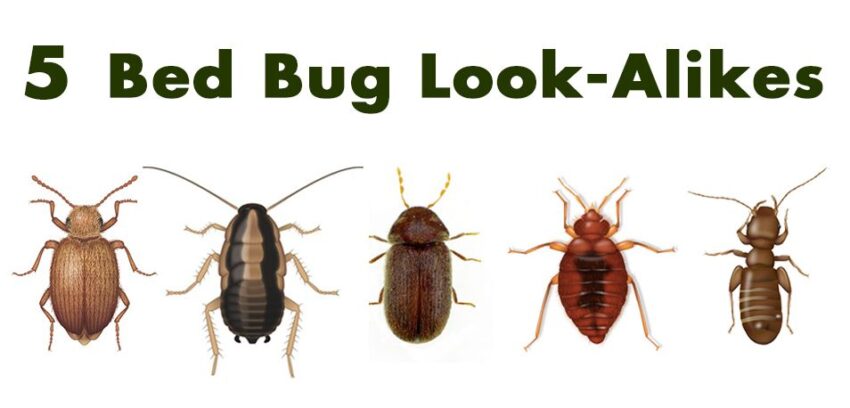Bed bugs are notorious pests that can cause anxiety and discomfort. However, not all bugs that look similar to bed bugs are actually bed bugs. In this blog, we’ll explore five bugs that resemble bed bugs and discuss how to identify and manage them, highlighting the importance of pest control and bed bugs control services.
Carpet Beetles:
Carpet beetles are small insects that often get mistaken for bed bugs due to their size and color. They are oval-shaped and can range in color from black to brown. Unlike bed bugs, carpet beetles do not feed on blood but instead feed on natural fibers like wool and silk. They are often found in carpets, upholstery, and clothing.

Identification: Look for small, round beetles with distinct patterns on their backs. You may also find their larvae, which are hairy and can cause damage to fabrics.
Management: To control carpet beetles, vacuum your home regularly, especially areas where they are likely to hide. Wash and dry clothing and bedding at high temperatures to kill any beetles or larvae.
Bat Bugs:
Bat bugs are closely related to bed bugs and are often found in homes with bat infestations. They are similar in appearance to bed bugs but have longer hairs on their thorax. Bat bugs feed on bat blood but can bite humans if their primary host is not available.
Identification: Look for bugs that resemble bed bugs but with longer hairs on their bodies. They are typically found in areas where bats roost, such as attics and wall voids.
Management: Controlling bat bugs involves addressing the bat infestation first. Once the bats are removed, the bat bugs will typically disappear on their own. However, professional pest control may be necessary for severe infestations.
Swallow Bugs:
Swallow bugs are similar in appearance to bed bugs but are associated with bird nests, particularly swallow nests. They can bite humans but prefer to feed on bird blood. Swallow bugs are often found in homes with swallow nests in the vicinity.

Identification: Look for bugs that resemble bed bugs but are found near bird nests or areas where birds roost. They may migrate into homes from outside.
Management: Removing swallow nests from the vicinity of your home can help control swallow bugs. Sealing off entry points where bugs can enter your home is also important.
Booklice:
Booklice, also known as psocids, are tiny insects that can be mistaken for bed bug nymphs due to their size and color. However, unlike bed bugs, booklice do not feed on blood but instead feed on mold, fungi, and organic matter.
Identification: Look for small, pale insects with long antennae and a soft body. They are often found in damp and humid areas, such as basements and bathrooms.
Management: To control booklice, reduce humidity levels in your home by using dehumidifiers and fixing any leaks or moisture issues. Keep areas clean and free of mold and mildew.
Spider Beetles:
Spider beetles are small, reddish-brown insects that can resemble bed bugs, especially in their immature stages. They are scavengers and feed on a variety of organic materials, including grains, dried fruits, and dead insects.
Identification: Look for small beetles with a rounded body and long legs, resembling spiders. They are often found in stored food products and can occasionally be found in homes.
Management: Proper food storage and sanitation are key to controlling spider beetles. Seal food containers tightly and regularly clean storage areas to prevent infestations.
Conclusion:
Identifying bugs that resemble bed bugs is crucial for effective pest control. While these bugs may look similar, their habits and habitats differ significantly. If you suspect a bed bug infestation or encounter any of these look-alike bugs, it’s essential to consult with a professional pest control service specializing in bed bugs control. Proper identification and management are key to maintaining a pest-free home and ensuring your comfort and well-being.

